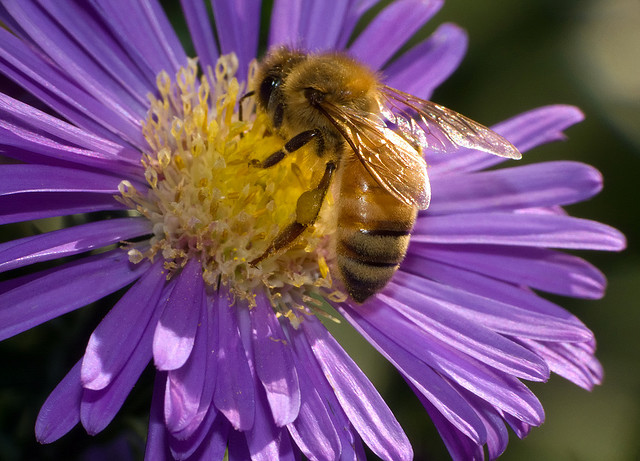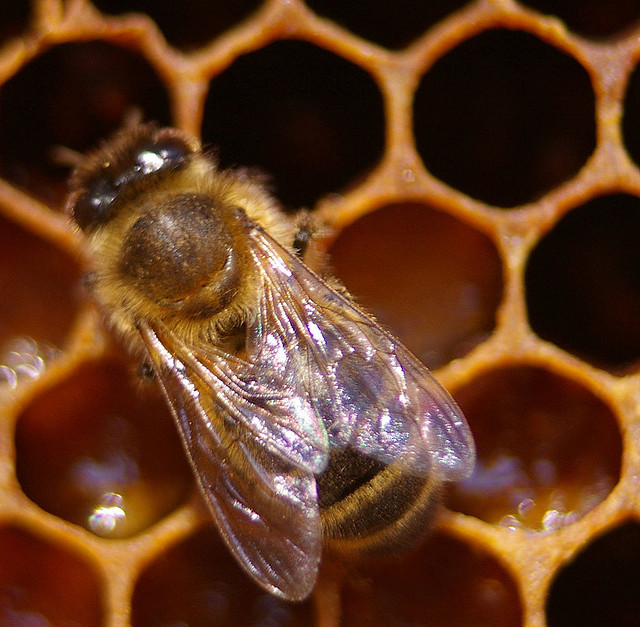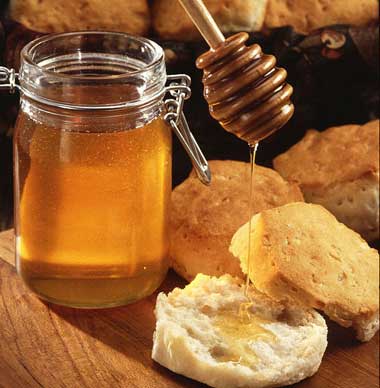Honeybee on flower; photo by Cory Barnes on Flickr (use permitted with attribution / share alike).
Official State Insect of Georgia
The honeybee was designated official state insect of Georgia in 1975 to acknowledge the insect's contribution to the state's economy through honey production and aiding pollination of more than 50 Georgia crops. Georgia also recognizes an official state butterfly.
Bee pollination is critical to plant and human survival - beeswax and honey are just surplus gifts from this tiny wonder of nature. The plant world expends a lot of energy attracting bees and other insects with brilliantly colored flowers and sweet nectar (nectar is produced solely to attract pollinating insects). The honeybee is recognized as an official state symbol in seventeen states, primarily because honeybees play such an important role in agriculture. All State Insects
From Senate Resolution No. 99
Whereas, honey produced by honeybees provides significant income to an important section of Georgia’s economy; and
Whereas, the honeybee is a valuable asset to the agricultural interests of this State; and
Whereas, if it were not for the cross-pollination activities of honeybees for over fifty different crops, we would soon have to live on cereals and nuts; and
Whereas, the honeybee far surpasses any other insects insofar as its contributions to man; and
Whereas, the importance of the honeybee to the agricultural interest and the welfare of the citizens of the State should be appropriately recognized.
Now, therefore, be it resolved by the General Assembly of Georgia that the honeybee is hereby designated as the State of Georgia’s official insect.
Honeybee Facts
Honeybees live in hives of up to 80,000 individuals. A hive consists of one queen bee (who can live 8 years and lay over 1,500 eggs per day), a small group of male drones (on hand to fertilize a new queen on her nuptial flight, should one be produced), and the remaining vast majority of sterile female worker bees.
Young worker bees are called house bees - they construct the hive and maintain the comb, care for the eggs and larvae, tend the queen and drones, regulate temperature, and defend the hive. Older workers are field bees - they gather nectar and forage for pollen, water and plant resins used in hive construction. Worker bees have an extra stomach and special pollen baskets on their hind legs to transport the booty. Empirical evidence suggests that the honeybee "dances" to communicate the location of a nectar discovery to other honeybees. Worker bees only live about 6 weeks in summer months, but honeybees born in fall survive until the following spring.
The first bees appear in the fossil record dating 40 million years ago and the honeybee has remained physically and socially unchanged for 30 million years. Probably originating in tropical Africa, they were brought to the New World with the first Spanish and English colonists, quickly escaping to the wild and eventually populating the entire western hemisphere. Native Americans called honeybees "white man's flies."



